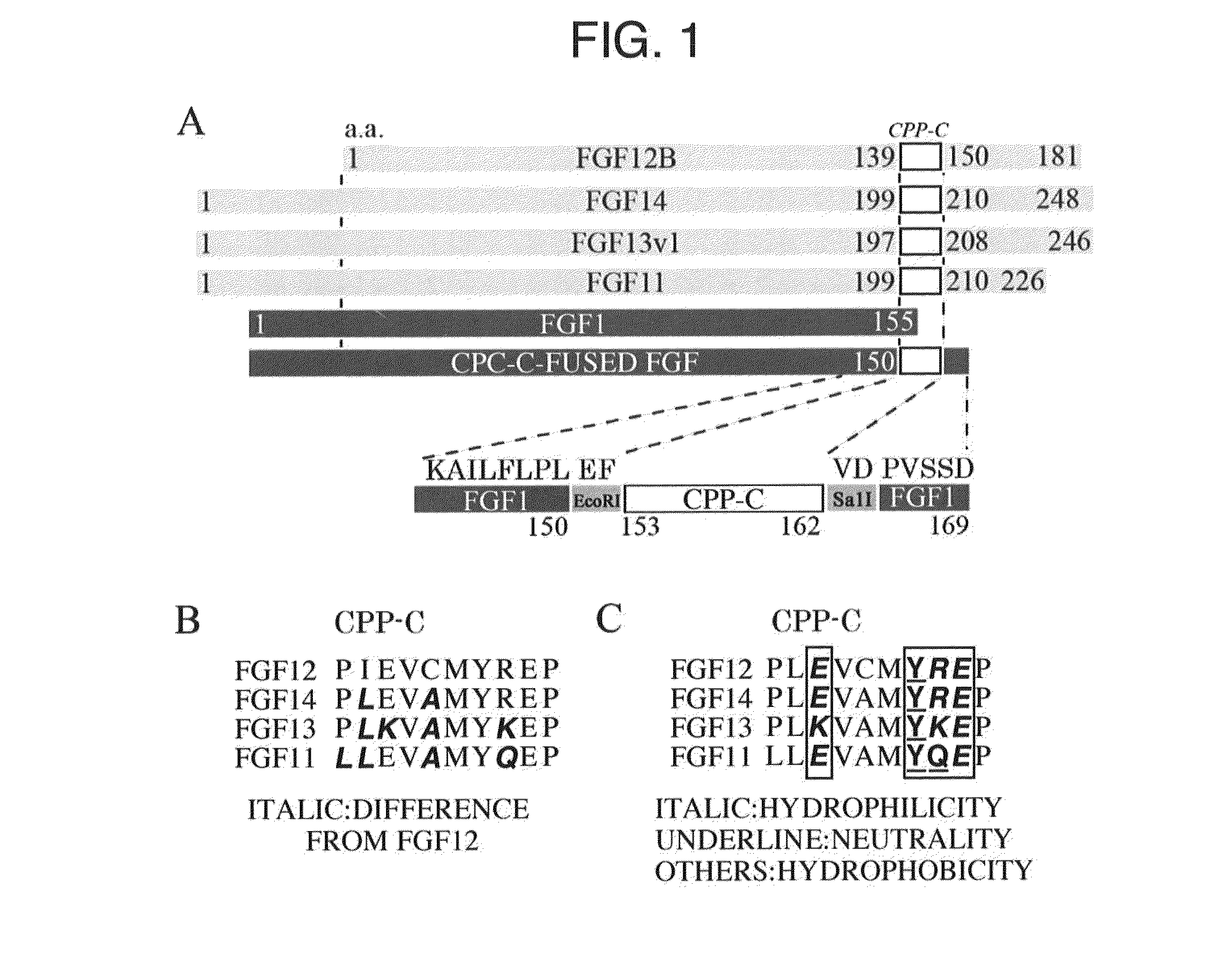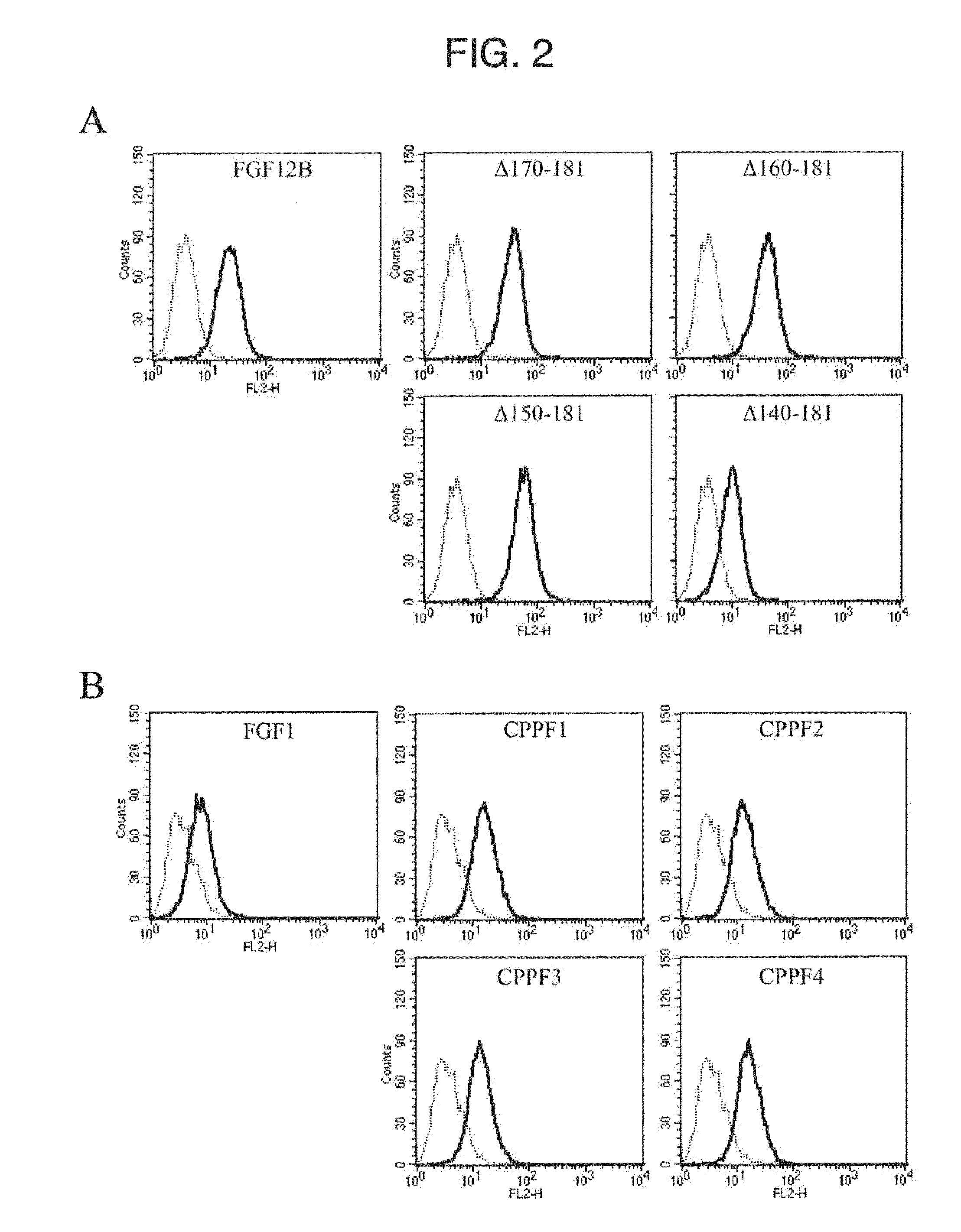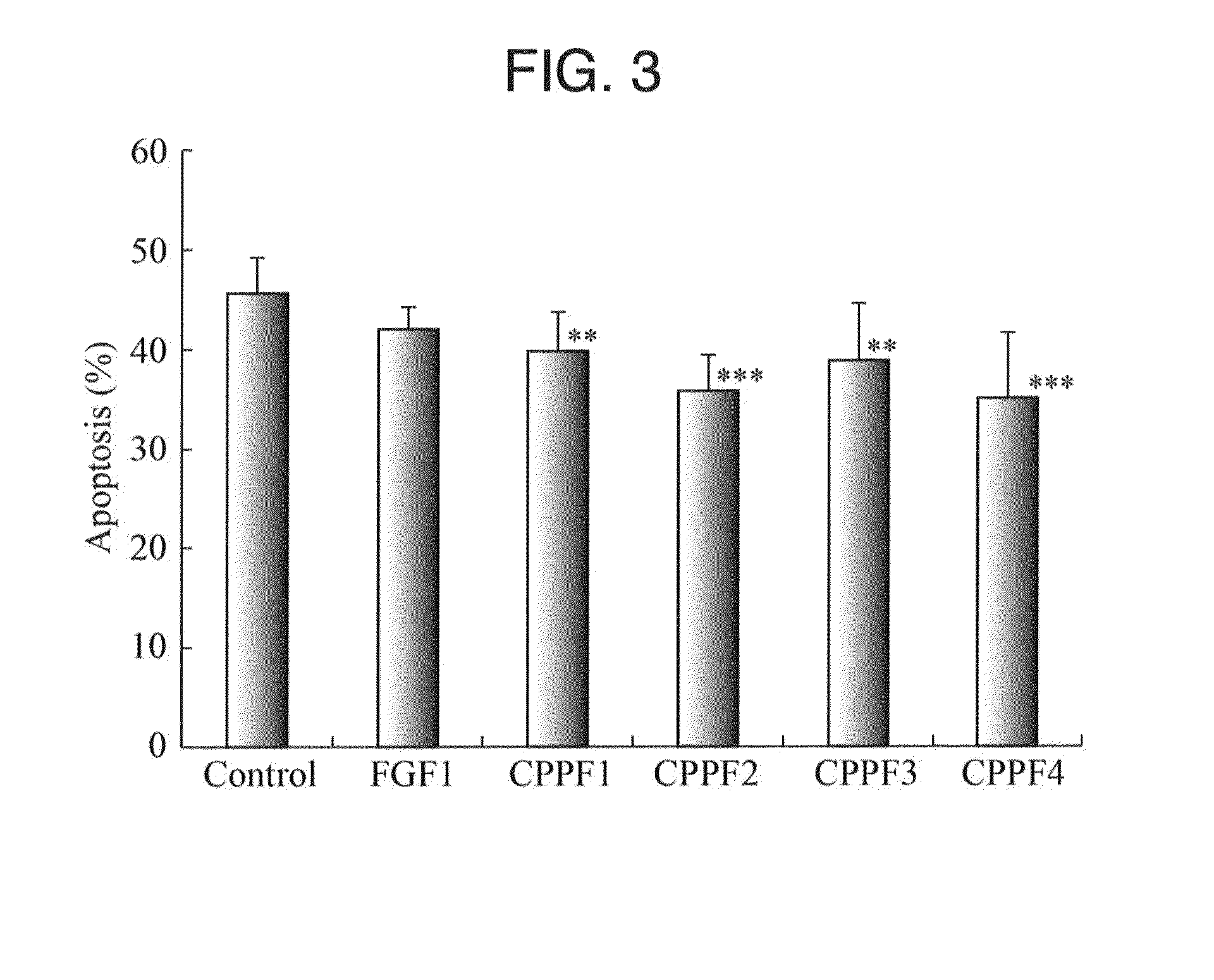Medical treatment use of cell-membrane-permeable fibroblast growth factor
a cell-membrane-permeable, growth factor technology, applied in the field of chimeric drugs, to achieve the effect of preventing proliferation and metastasis of tumor cells, low expression level, and sufficient curative
- Summary
- Abstract
- Description
- Claims
- Application Information
AI Technical Summary
Benefits of technology
Problems solved by technology
Method used
Image
Examples
working examples
[0133]Hereafter, the present invention is described in greater detail using the working examples, although the technical scope of the present invention is not limited to these working examples.
Testing Methods and Testing Materials
[0134]The following summarizes testing methods and materials used for each working example.
1. FGF1, FGF12B, and FGF12B Fragments
[0135]The FGF1 having the amino acid sequence shown by SEQ ID NO. 1 was prepared in accordance with the method described in Non-Patent Document 8. The FGF12B and FGF12B fragments were also prepared in the procedure described in Non-Patent Document 8. The amino acid sequence of the FGF12B is shown by SEQ ID NO. 34.
2. Chimeric Protein
[0136]The chimeric proteins formed by fusing each CPP-C derived from the FGF11, FGF12, FGF13, and FGF14 of the FGF11 subfamily to the FGF1 (hereinafter abbreviated as a CPPF1, CPPF2, CPPF3, and CPPF4, respectively) were prepared in accordance with the method described in Non-Patent Document 8. The relate...
PUM
| Property | Measurement | Unit |
|---|---|---|
| weight | aaaaa | aaaaa |
| concentration | aaaaa | aaaaa |
| concentration | aaaaa | aaaaa |
Abstract
Description
Claims
Application Information
 Login to View More
Login to View More - R&D
- Intellectual Property
- Life Sciences
- Materials
- Tech Scout
- Unparalleled Data Quality
- Higher Quality Content
- 60% Fewer Hallucinations
Browse by: Latest US Patents, China's latest patents, Technical Efficacy Thesaurus, Application Domain, Technology Topic, Popular Technical Reports.
© 2025 PatSnap. All rights reserved.Legal|Privacy policy|Modern Slavery Act Transparency Statement|Sitemap|About US| Contact US: help@patsnap.com



